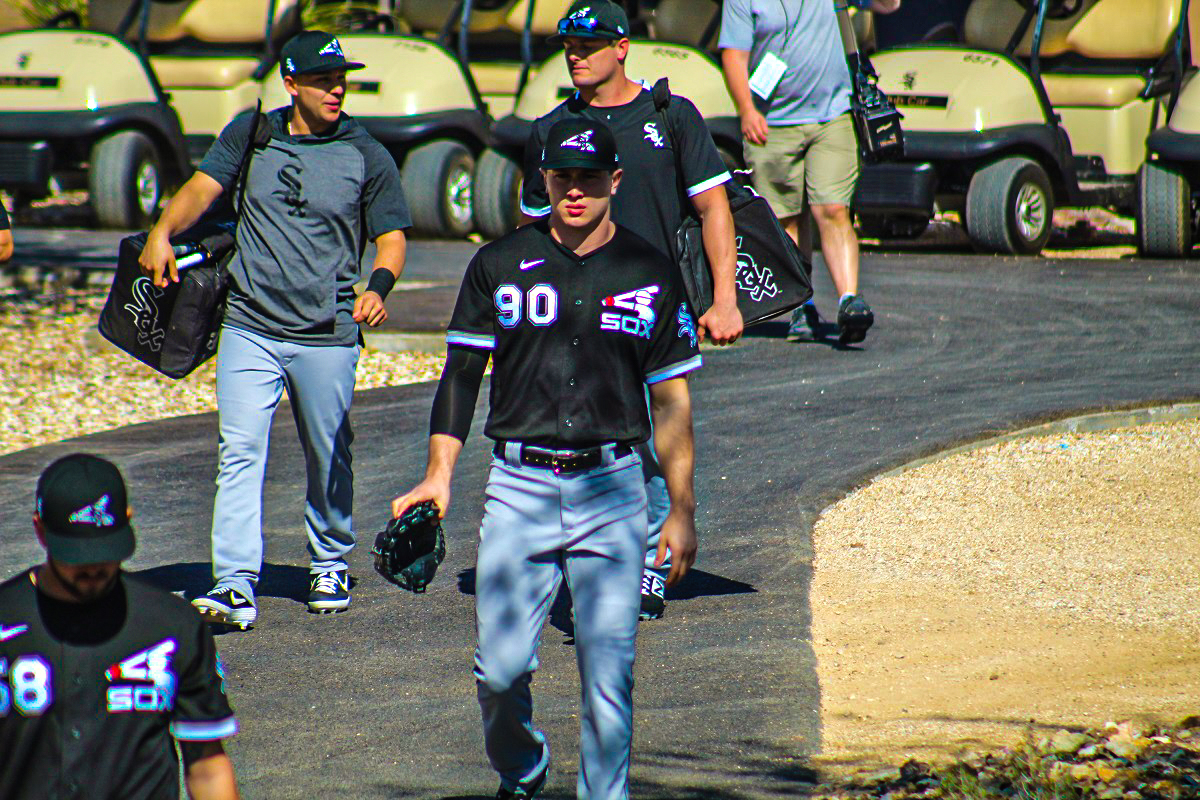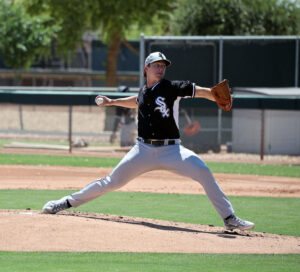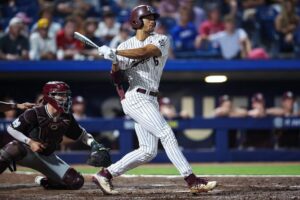White Sox rookie review: Jonathan Stiever

via Sean Williams/FutureSox
Despite there being no minor league season in 2020, there were a significant number of White Sox prospects who made big strides. The White Sox had 12 players make their MLB debuts. We are taking a look back at how they fared and what it means for their future. We already covered Dane Dunning, but Jonathan Stiever also got some starts in the rotation this year.
Relevant stats: 6.1 IP, 9.95 ERA, 3 K, 4 BB, 7 H (4 HR) in the regular season (2 starts).
THRUST INTO ACTION
Stiever was not expected to make his major league debut this season. You know, with him not having pitched above High-A Winston-Salem in his career. But desperate times call for desperate measures. The White Sox were short several pitchers. The club lost Carlos Rodon to injury and sent down Reynaldo Lopez in early September. Dunning had already been called up without Triple-A experience. Stiever hadn’t even reached Double-A, although he was set to do so in a normal 2020. On Sept. 13, Stiever drove to Chicago from Schaumburg to make his major league debut against the Detroit Tigers one day later.
Though it was not the toughest of assignments, Stiever looked good in his debut. With James McCann behind the plate, he pitched 3.2 innings and gave up one run, while walking two and striking out three. After a rough start to the game and with one run in the first inning, Stiever settled down. He retired the next eight batters before being taken out of the game after hitting his pitch count limit.
The encouraging outing kept Stiever around for a second start, this one coming on Sept. 19 in Cincinnati against a revived Reds team that would reel off a streak so hot that it landed them in the playoffs. Stiever faced them at the wrong time, and it showed. He struggled to find the strike zone, and when he did, Reds hitters were not fooled. This time with Yasmani Grandal catching him, the 23-year old coughed up four home runs, as Nicholas Castellanos, Tucker Barnhart, Joey Votto and Jesse Winker took him deep. Stiever gave up six runs in 2.2 innings, a deficit the then-ice-cold White Sox offense was not able to overcome.
LEARNING ON THE JOB
Stiever was sent to Schaumburg following the game and did not see major league action for the rest of the season. Still, the two starts of ‘on the job learning’ were fruitful for both the pitcher and the organization. The 6.1 innings Stiever pitched showed both his strengths and weaknesses (or things he needs to work on).
As far as ‘the good’ goes: Stiever ended the season with a 58.6 first-pitch-strike percentage, not far off from — for instance — Lucas Giolito‘s 59.4%. Though it is in itself a good quality to throw first-pitch strikes, Stiever did run into the problem of throwing too many pitches (especially fastballs) in the zone. This led to a whopping 74.2 zone swing% and 87.8% zone contact%. In short, Stiever did not induce many swinging or looking strikes on pitches inside the zone. That did not have to be a big deal if he had been able to throw his breaking pitches in the zone. Unfortunately, that was not the case.
What also did not help: Stiever’s fastball was generally not as fast as advertised. The 95-97 mph heater did not show up in 2020, as Stiever averaged out at 92.3 mph. As a result, the ‘ride’ that made Stiever’s four-seamer so deadly in 2019 was not present enough either. A lack of velocity and movement, combined with location problems for his breaking stuff, led to a worrisome 22.7 barrel%. This would have been worst in the league had Stiever pitched enough innings to qualify. (Jon Lester led the majors with a 12.3 barrel%, for what that’s worth). On top of that, Stiever’s 91.4 mph exit velocity would have tied Framber Valdez for the major league ‘lead’ as well.
CAUSE AND EFFECT
On top of that, Stiever was all over the place at times with anything but his four-seamer, as evidenced by the data below. (That’s right, he occasionally missed so far down that Statcast could not even fully mark the location). Though Stiever generally filled up the strike zone with fastballs, it was pretty clear to hitters that anything in the zone generally was a fastball. His changeup was the best pitch of his off-speed arsenal, but the spiky nature of his curveball and a lack of control over the pitch led to Stiever missing the zone often and by a lot. His slider got hammered, to the tune of a .684 xBA and a 1.286 SLG (including two home runs).

Though these numbers may not paint the greatest picture for the 23-year-old, it wasn’t all this bad. The 40.9 groundball% would have placed Stiever in the top 30 in the majors, one spot ahead of Dylan Bundy and two behind (again) Giolito. This was good company in 2020, so there is still plenty to be excited about for Stiever. With the experience of this season under his belt and (hopefully) a normal minor league season ahead in 2021, it will be exciting to see what the young fireballer can become in the years to come.
Photo credit: Sean Williams/FutureSox
Want to know right away when we publish a new article? Type your email address in the box on the right-side bar (or at the bottom on a mobile device) and click create subscription. Our list is completely spam free, and you can opt out at any time. Also, consider supporting FutureSox on Patreon! You can get early access to special articles and Patreon-only posts, in addition to more benefits.
Shop our exclusive merchandise! Show your support with FutureSox apparel.






